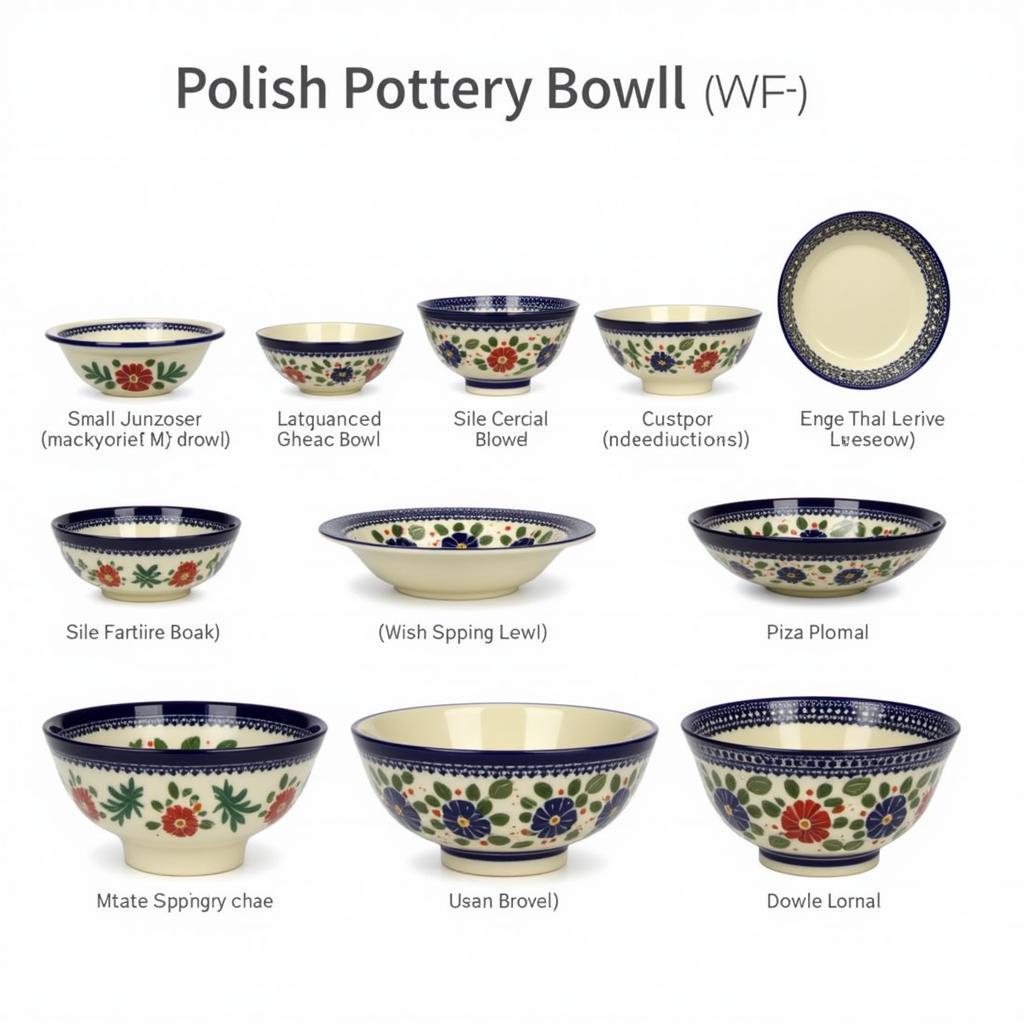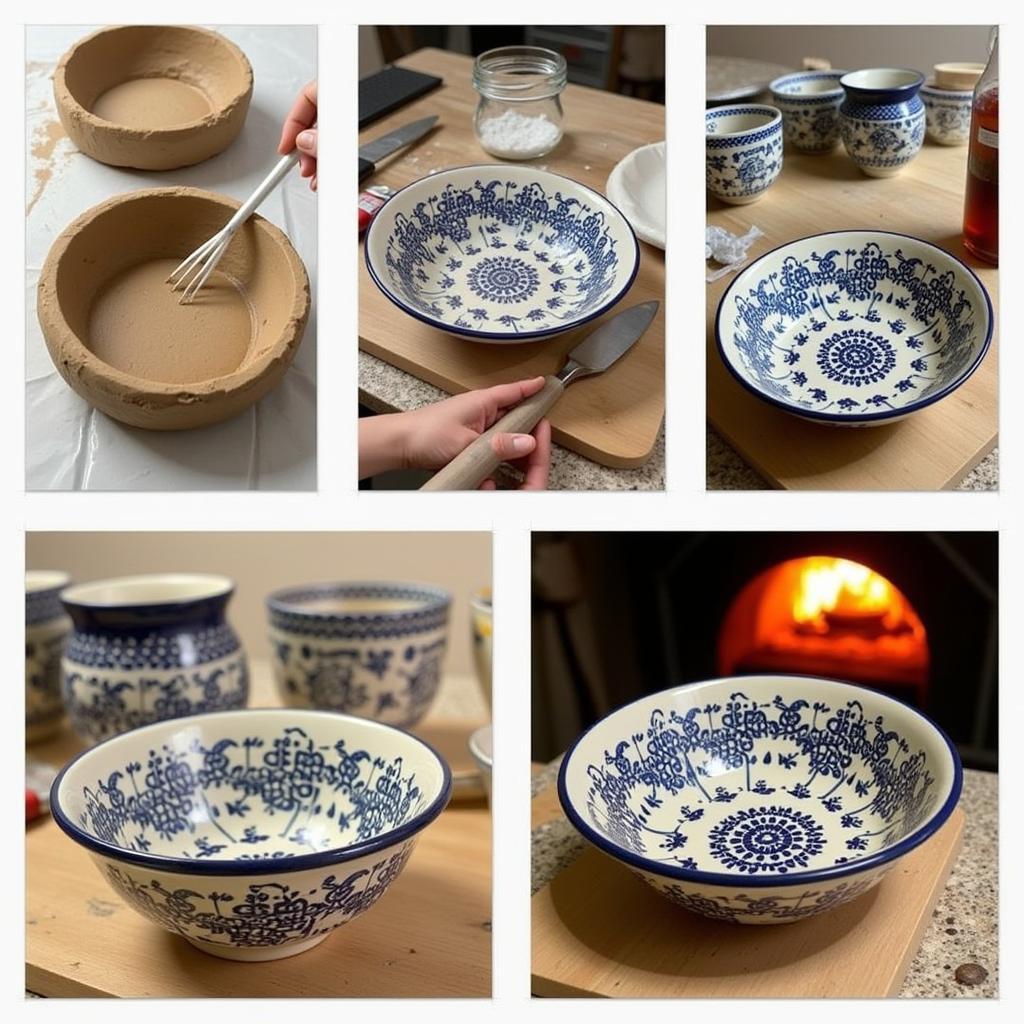Exploring the World of Polish Bowls
November 1, 2024Polish Bowls are more than just simple containers. They represent a rich history of craftsmanship, artistic expression, and cultural significance. From their humble beginnings as functional kitchenware to their elevated status as decorative art pieces, these bowls have captured the attention of collectors and enthusiasts alike. This article dives deep into the fascinating world of polish bowls, exploring their history, types, uses, and how to care for them.
A Deep Dive into Polish Pottery Bowls
Polish pottery, especially the iconic bowls, has a rich history dating back centuries. Originally crafted for practical purposes, these bowls quickly became recognized for their beautiful designs and durable construction. The traditional methods of hand-painting and high-temperature firing create unique pieces that are both functional and visually stunning. Whether you’re looking for a metal popcorn bowl or a traditional Polish pottery bowl, understanding the history and craftsmanship behind these pieces adds a layer of appreciation.
The distinctive feature of Polish pottery bowls is the intricate hand-painted designs. Each piece is unique, reflecting the skill and artistry of the artisan. These designs often incorporate traditional Polish folk motifs, floral patterns, and geometric shapes, adding a touch of cultural heritage to each bowl.
What are the different types of Polish Bowls?
Polish bowls come in a wide variety of shapes and sizes, catering to diverse needs and preferences. From small dipping bowls to large serving bowls, there’s a perfect Polish bowl for every occasion. Some popular types include the classic Boleslawiec bowls, known for their distinctive cobalt blue and white patterns, and the more contemporary Unikat signature pieces, which feature unique, one-of-a-kind designs.
 Variety of Polish Pottery Bowls
Variety of Polish Pottery Bowls
How are Polish Bowls Made?
The process of creating Polish pottery bowls is a testament to time-honored traditions and meticulous craftsmanship. It involves several stages, from shaping the clay to hand-painting the intricate designs and finally firing the pieces at high temperatures. This meticulous process results in durable, high-quality bowls that are built to last.
The clay used in Polish pottery is carefully selected and prepared. It’s then shaped into the desired form, whether it’s a deep serving bowl or a shallow dish. Once the shape is finalized, the bowls are left to dry before being hand-painted.
 Polish Pottery Bowl Making Process
Polish Pottery Bowl Making Process
Caring for your Polish Bowls
While Polish pottery is known for its durability, proper care can ensure its longevity and preserve its vibrant designs. Hand-washing is recommended to prevent chipping and fading. Avoid using abrasive cleaners or placing the bowls in the dishwasher. With proper care, your Polish bowls will remain beautiful and functional for years to come.
Are Polish Bowls Dishwasher Safe?
While some Polish pottery is advertised as dishwasher-safe, hand-washing is generally recommended to prolong the life and vibrancy of the designs. The high temperatures and harsh detergents in dishwashers can cause fading and chipping over time.
“Hand-washing is the best way to care for your Polish pottery. It ensures the longevity of the pieces and preserves their beautiful designs,” says Anna Kowalska, a renowned Polish pottery expert.
How to Clean Polish Bowls?
Cleaning Polish bowls is easy. Warm water and a mild dish soap are all you need. Avoid abrasive cleaners or scouring pads, which can scratch the surface. Gently wash the bowls and rinse them thoroughly. Allow them to air dry completely before storing.
“Treat your Polish pottery with care and it will reward you with years of beauty and functionality,” adds Jan Nowak, a master craftsman specializing in Polish pottery.
Conclusion
Polish bowls are a testament to the rich artistic and cultural heritage of Poland. From their intricate hand-painted designs to their durable construction, these bowls are both functional and beautiful. By understanding their history, types, and proper care techniques, you can appreciate and enjoy these unique pieces for years to come. Consider adding a Polish bowl to your collection today. You might even want a metal popcorn bowl for movie nights!
FAQ
-
What is Polish pottery made of? Polish pottery is made from a special type of clay found in the Bolesławiec region of Poland.
-
Is Polish pottery microwave safe? Yes, most Polish pottery is microwave safe.
-
Can I use Polish pottery in the oven? Yes, Polish pottery is oven safe.
-
Why are Polish bowls so popular? Polish bowls are popular for their beautiful designs, durability, and cultural significance.
-
Where can I buy authentic Polish bowls? Authentic Polish bowls can be purchased from reputable retailers specializing in Polish pottery.
-
Are all Polish bowls hand-painted? Yes, authentic Polish pottery bowls are hand-painted, making each piece unique.
-
What are the most common colors used in Polish pottery? The most common colors are cobalt blue, white, green, and yellow.
Looking for more information on specific types of bowls? Check out our article on metal popcorn bowl.
Need help with choosing the right bowl for your needs? Contact us! Phone: 0963418788, Email: [email protected] Or visit us at: 2M4H+PMH, Phường Nghĩa Thành, Gia Nghĩa, Đắk Nông, Việt Nam. We have a 24/7 customer service team.